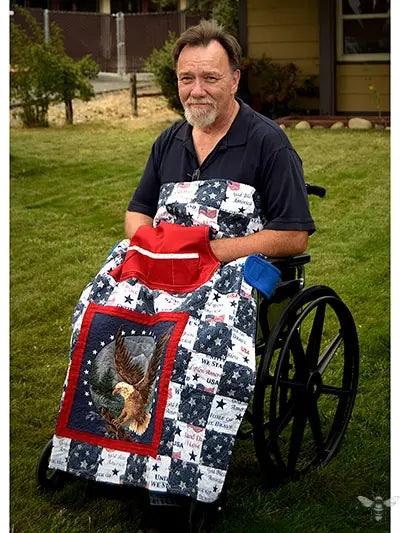
Breaking Barriers: Promoting Inclusion for Disabled Quilters in the Quilting Community
Quilting has long been viewed as a domestic hobby, something that women do in their spare time to make blankets or decorate their homes. However, in recent years, quilting has evolved into a serious art form, with many talented artists pushing the boundaries of traditional quilting techniques to create stunning and thought-provoking works of art.
Despite this shift, the quilting community still struggles with the perception that quilting is just a hobby, rather than a serious artistic pursuit. One way in which this is reinforced is through quilt shows and competitions, which often prioritize technical skill over creativity and originality.
As a matter of fact, there is a growing number of disabled quilters who are making their mark on the quilting world. In fact, I am aware that there are groups like Mine, Neurodiverse Quilters, with 500 neurodiverse quilters, who are dedicated to showcasing the work of disabled quilters and promoting greater inclusion in the quilting community. However, despite this progress, there are still significant barriers that prevent many disabled artists from fully participating in the quilting world.
This emphasis on technical skill can be particularly exclusionary for disabled artists. Many quilting techniques require fine motor skills and precise hand movements, making them difficult or impossible for people with disabilities or chronic illnesses. As a result, disabled quilters may struggle to compete in traditional quilting shows, where their work may not be considered "technically proficient" enough to win awards or recognition.
Moreover, many disabled people were forced to make crafts in shelter workshops that they never got to see the money from. This experience of exploitation and exclusion can further deter disabled people from pursuing quilting as a serious artistic pursuit.
The emphasis on technical skill can perpetuate the myth of perfection, which can be particularly damaging for disabled artists. Disabled people are often held to impossibly high standards of achievement, and their work may be dismissed or undervalued if it does not meet these standards. This can contribute to the erasure of disabled artists from the quilting community, as they may feel that their work is not good enough to be considered "real" quilting.
Another way in which quilt shows contribute to the erasure of disabled artists is through the cost of entry. Many quilt shows require quilters to pay entry fees in order to have their work considered for awards or inclusion in the show. For disabled artists who may not be able to work full-time or have access to adequate financial resources, these fees can be prohibitive. This can create a barrier to entry for disabled artists, who may not be able to afford to compete in traditional quilting shows.
In order to promote greater inclusion and diversity in the quilting community, it is important to challenge the idea that quilting is just a hobby and to recognize it as a legitimate art form. This means promoting creativity and originality over technical skill, and valuing the contributions of disabled artists who may approach quilting in different ways. It also means working to reduce the financial barriers to entry for disabled artists, and providing more resources and support for them to participate in quilting shows and competitions.
Ultimately, by working to create a more inclusive and equitable quilting community, we can help to ensure that this rich tradition continues to thrive and evolve for generations to come, and that the contributions of all artists are valued and celebrated.
Comments
Check out comments or add a new one.